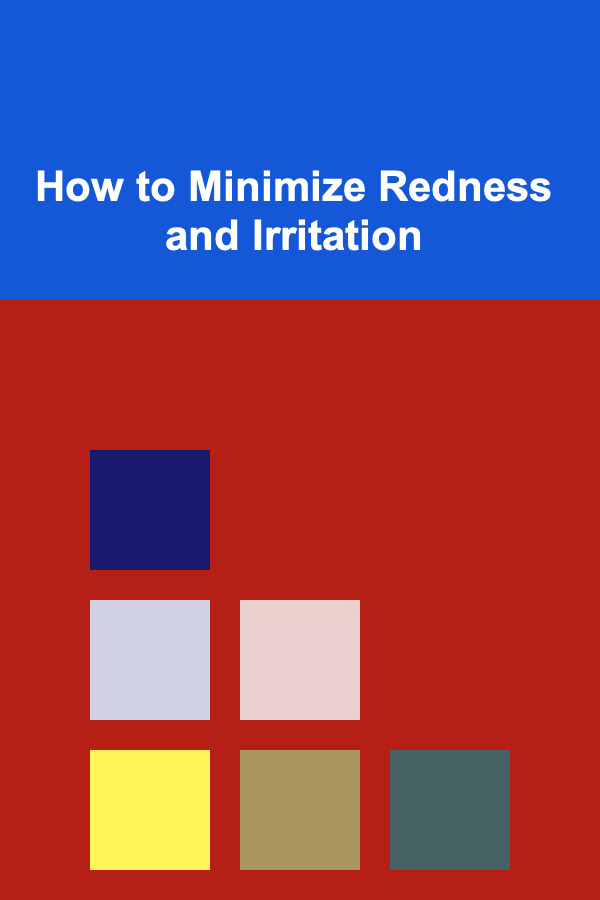
How to Color Realistic Fur with Colored Pencils
ebook include PDF & Audio bundle (Micro Guide)
$12.99$8.99
Limited Time Offer! Order within the next:
Not available at this time

Creating realistic fur with colored pencils can be both a challenging and rewarding experience for artists. The ability to capture the softness, texture, and depth of fur is a skill that requires patience, practice, and an understanding of various techniques. Whether you're drawing a realistic pet portrait, a wild animal, or a fantasy creature, mastering fur textures with colored pencils can take your artwork to the next level.
In this comprehensive guide, we'll break down step-by-step how to color realistic fur with colored pencils, covering the essential techniques, tips, and tools to help you achieve lifelike fur textures. By the end of this article, you'll have a deeper understanding of how to approach fur in your drawings and how to use colored pencils to bring it to life.
Choosing the Right Tools for the Job
Before diving into the techniques, it's important to choose the right tools. Colored pencils are available in various brands, types, and qualities. To achieve the best results when coloring fur, you'll need pencils that allow for smooth layering and blending.
Essential Colored Pencils
- High-Quality Colored Pencils: Opt for professional-grade colored pencils like Prismacolor, Caran d'Ache, or Faber-Castell Polychromos. These pencils have rich pigments that blend easily and produce vibrant colors.
- Hard and Soft Pencils: A mix of hard and soft pencils is useful. Soft pencils allow for smooth, rich coverage, while hard pencils help with fine detailing and layering.
- Color Variety: Ensure you have a wide range of colors that match the hues found in real fur. This typically includes browns, blacks, creams, grays, and some warm shades like reds and oranges for highlighting certain areas.
Additional Tools
- Blending Stumps: These are used to blend and soften the colors, creating a smoother appearance for fur.
- Eraser: A kneaded eraser is great for lifting color or lightening areas for highlights, which is important in creating realistic fur textures.
- Paper: Use a textured, high-quality paper like Bristol board or watercolor paper. The texture of the paper will help the colored pencils grip and build layers effectively.
Understanding the Structure of Fur
Before you start coloring, it's essential to understand the structure of fur. Fur is composed of individual strands, often varying in length, texture, and direction. Realistic fur drawings require attention to these factors.
Types of Fur
- Short Fur: Found on many animals like dogs, cats, and rabbits, short fur is smooth and dense. It often requires softer pencil strokes to mimic the close-knit fibers.
- Long Fur: For animals like horses, wolves, and some breeds of cats, long fur is more flowing and wavy. Longer, layered pencil strokes work best for capturing this texture.
- Fluffy Fur: Animals with thick coats of fluffy fur, like certain breeds of cats and dogs, require a different technique, focusing on soft, delicate pencil strokes that create the illusion of volume.
Layers and Direction
Fur grows in specific directions depending on the animal and the body part. Understanding how the fur grows in different areas will allow you to draw more realistic textures.
- Facial Fur: Fur on the face typically grows in a more concentrated and even direction. It may need more precise strokes and sharper detailing.
- Body Fur: Fur on the body tends to flow more naturally and often follows the shape of the animal's muscles or the way they sit.
- Leg Fur: Leg fur can be more textured with longer strokes to represent the strands of hair growing in different directions.
Layering: The Foundation of Realistic Fur
Layering is one of the most crucial techniques in colored pencil artwork, especially when creating fur. This method involves applying multiple layers of color on top of one another to build depth, create texture, and mimic the natural appearance of fur.
How to Layer Effectively:
- Start Light: Begin by laying down a light base color for the fur. This should be a neutral or light version of the overall fur color you want to achieve. Use a light hand so that the colors are translucent.
- Build Gradually: Gradually build up additional layers, moving from light to dark tones. Use light pressure to lay down the colors initially, and increase pressure as you add more layers.
- Blend Between Layers: Use a blending stump or your colored pencil to gently blend between layers. This creates a smooth transition from one color to another, softening the appearance of pencil strokes and mimicking the softness of fur.
- Use Many Layers: Realistic fur often requires many layers of color. Fur can appear complex and multi-dimensional, so you'll need to layer different hues to create a depth of tone and texture. Work on smaller sections at a time and focus on fine details.
Creating Texture with Pencil Strokes
When drawing fur, the pencil strokes you use can have a significant impact on the realism of your artwork. The texture of fur is typically indicated by the direction and type of strokes.
Techniques for Drawing Fur Strokes:
- Short, Stippled Strokes: For short fur, use small, circular strokes or short lines. These strokes should mimic the tight-knit pattern of the fur and can be layered to create depth.
- Long, Flowing Strokes: For long fur, use longer pencil strokes that flow in the direction of the fur growth. Vary the pressure to create a natural texture that looks soft but defined.
- Flicking or Jabbing Strokes: For fluffy fur, use quick, flicking motions with your colored pencils to create the illusion of light, wispy fur. This works best with the tip of the pencil to keep the strokes fine and controlled.
Vary the Length of Strokes
Varying the length of your pencil strokes creates variation in the fur texture, which adds to the realism of your drawing. For example, shorter strokes near the neck or face may represent more compact fur, while longer strokes near the tail or back of the animal can represent flowing or wavy fur.
Layering Multiple Colors for Depth
One of the most important techniques in creating realistic fur is the ability to layer different colors to achieve depth. Fur is rarely one solid color. Instead, it's a combination of different hues that reflect light in various ways.
Common Color Combinations for Fur:
- Brown Fur: Use various shades of brown such as reddish browns, dark browns, and lighter tans to create depth and shadow. Adding some yellow and orange can give the fur a warm, realistic glow.
- Black Fur: Black fur should not be drawn with pure black. Use dark browns, grays, and even deep blues to create highlights and textures. A bit of white or cream can be used to create reflective areas.
- Gray Fur: Gray fur is often composed of layers of cool tones like blues and purples. Layering different shades of gray, along with some warm tones, will give the fur a more dynamic appearance.
- White Fur: White fur requires a subtle blend of light grays, creams, and even soft blues. It's important to understand how light plays on white fur and use layers to indicate shadows and highlights.
How to Layer Colors:
- Base Color: Start with the lightest or most dominant color in the fur.
- Mid-Tones: Layer in your mid-tones, which form the bulk of the fur's color.
- Shadows: Add deeper colors like dark browns or purples to create shadows and depth in the fur.
- Highlights: Use lighter colors such as white, cream, or pale yellow to create highlights in areas where the light hits.
By layering colors in this way, you create a more dynamic, three-dimensional effect that mimics the natural light and texture of fur.
Blending and Softening Edges
Once you have applied multiple layers of color, it's time to blend and soften the edges of the fur. Blending helps create the smooth transitions that make fur look soft and realistic.
Blending Techniques:
- Blending Stumps: These are used to gently blend the colored pencil pigments into the paper, creating a smoother, more uniform texture. Use a blending stump to soften harsh pencil lines and transitions.
- Colorless Blender: Many colored pencil sets offer a colorless blender pencil, which is a special pencil designed to blend colors without adding new pigment.
- Finger or Tissue: Some artists use their fingers or tissues to blend the colors, but this requires caution as it can smear the colors. It's a good method for softening areas of fur that need to be blurred or have smooth transitions.
Blending for Fur:
- Subtle Blending: Keep the fur texture intact while blending. Don't over-blend, as this could make the fur look flat and unrealistic. Instead, focus on softening areas where fur naturally transitions, such as around the edges or where shadows meet highlights.
Adding Final Details and Highlights
Once the majority of the fur is complete, you can focus on adding the finer details that bring your fur to life. Highlights and minute details can make a big difference in creating a realistic appearance.
Adding Highlights:
- Light-colored Pencils: Use a white or light cream pencil to add highlights to the fur. Focus on areas where light naturally hits, such as the top of the head, back, or tips of the fur.
- Small, Delicate Strokes: Add fine, delicate strokes of color to mimic the softness and fine texture of individual fur strands. Use a sharp pencil to add these fine lines, following the direction of the fur growth.
Fine Details:
- Individual Fur Strands: With a sharp pencil, add the finest details of individual fur strands, especially around the face, ears, or tail. These fine lines add realism and texture, making the fur appear natural.
Final Review and Adjustments
Once you've completed your fur drawing, it's time to take a step back and assess your work. Look for areas where you might need to add more depth, detail, or highlights. Check the direction of your strokes to ensure they flow naturally and adjust any parts that seem too harsh or flat.
Final Touches:
- Add more layers if necessary.
- Blend certain areas to soften or sharpen the texture.
- Use your kneaded eraser to lift areas that need highlights or to add depth.
Conclusion
Drawing realistic fur with colored pencils takes practice, patience, and attention to detail. By understanding the structure and texture of fur, layering multiple colors, and using proper pencil strokes, you can create fur that feels soft, natural, and lifelike. Remember that every animal's fur is different, so study your reference images carefully and don't be afraid to experiment with various techniques to achieve the desired result.

How to Use User Feedback for Content Improvement
Read More
How to Minimize Redness and Irritation
Read More
How To Combat Acne Breakouts Effectively
Read More
Mastering 3D Printing for Home Repairs: A Comprehensive Guide
Read More
Exploring the Truth Behind Ancient Technologies
Read More
10 Tips for Scaling Your Data Science Consulting Practice
Read MoreOther Products

How to Use User Feedback for Content Improvement
Read More
How to Minimize Redness and Irritation
Read More
How To Combat Acne Breakouts Effectively
Read More
Mastering 3D Printing for Home Repairs: A Comprehensive Guide
Read More
Exploring the Truth Behind Ancient Technologies
Read More